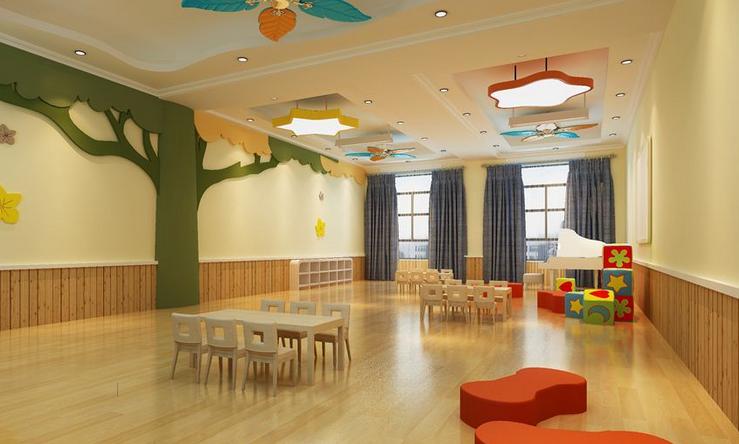全英文英语教案模板52fw.cn整理:
Lesson plan
NSEFC Module2 Unit Reading In Teacher:
Period:Period1 Type:Reading
Duration: 45minutes
Teaching ideology
The current theory view reading as a interactive process which involves not only the printed page but also the reader’s old knowledge of the language in general, the world and the text types. In the reading process, these factors interact with each other and compensate for each other. Based on the understanding of reading as an interactive process, teaching reading in the classroom is divided into three stages in which the top-down and bottom-up techniques integrated to develop the students language efficiency in general and reading strategies. The three stages are pre-reading, while-reading and post-reading.
Teaching material and learning condition
The analysis of teaching material
The teaching material is the reading part from NSEFC Module2 Unit. The topic of this unit is . This passage mainly introduces The passage consists of paragraphs. The first paragraph is a general introduction of the . Para.2 to Para.4 introduces . The last paragraph tells about . The topic is not new to the Ss. But there is some new words and phases in the passage.
The analysis of learning condition
The students are from grade1 in senior high school. As high school students, they have achieved certain English level and they have the ability to get the basic idea of the reading. Since they are in grade1, they are easily activated and want to air their own opinions on the topic. They are familiar with the topic of and know some. But they may not know before. Moreover, their vocabulary is limited so they may hav

Learning objectives
1. Language skills
● At the beginning of the class, Ss can predict the content of the passage based on the title. ● Ss can scan the passage and find out the specific information such as the person related with
2. Language knowledge
● Ss can master the key words and phrases of the passage as follows, . ● Ss can learn , especially
3. Affects
● Ss will realize that and they will concern themselves with the issue of
4. Cultural awareness
● Ss will broaden their minds by knowing something about
5. Learning strategies
● Ss will cultivate their ability individual learning and cooperative learning by doing some
activities independently and some in groups.
● Ss will communicate with each other in English while doing the group work. ● Ss will form a habit of question and thinking
Language difficulties
focuses and anticipated
Language focuses
This is a reading period so the focus is to cultivate the students’ reading skills. The many activities are designed to help Ss to train their reading skills, such as guessing, predicting, skimming, scanning and summarizing.
It is also important for the Ss to master the new words and phrases.
Anticipated difficulties
As the Ss have a limited vocabulary, so they may have some difficulties in understanding the passage. So the teacher will help them learn the new words and phrases.
Ss may did not heard before, so the teacher will tell them some background knowledge about it.
Teaching method
Three-stage model: Based on the understanding of reading as an interactive process, teaching reading in the classroom is divided into three stages in which the top-down and bottom-up techniques integrated to develop the students language efficiency in general and reading strategies. The three stages are pre-reading, while-reading and post-reading.
Teaching aids
Multimedia devices and PPT documents: In order to help Ss to fully understand the whole passage, I adopt Multimedia devices and PPT documents to bring the real-life situation into the classroom.
Teaching procedures
Step1. Lead-in (6min)
Activity1. Greetings and Free-talking (2min)
T Leads into the topic by asking Ss some they know. Ss tell the name of the they know freely.
T: Hello boys and girls. (Ss say hello to the teacher.)
T: When we say , what appears in your minds? (Ss tell the things appear in their minds freely.) T: What are the ? (Ss tell some names of .)
Activity2. Picture-talking (4min)
T shows some pictures about the in China and abroad. After seeing the pictures, Ss are expected to tell the similarities of them.
T: Just now, you talk about some in China. Now, let’s see some pictures of some . (T shows the pictures and Ss see them carefully.)把老师的话描述出来
T: What do thehave in common?For example, they are very precious. What are your opinions?
(T gives them some hints and Ss tell the characteristics of )
[Aims]
In this step, T first leads in the topic by talking with the Ss freely about the which
is familiar to them and then Ss see some pictures and tell the characteristics. These two activities aim to arouse the Ss’ interests in the topic and activate their old knowledge of . Then Ss will be mentally prepared for the reading comprehension. What’s more,
when they are
talking about the charateristics of, they will realize that theare rare and precious and they will concern themselves with the issue of .
Step2. Pre-reading (3min)
Activity1. Knowing something about (1min)
(T shows some pictures ofand Ss get to know the .)
Activity2. Predicting (2min)
T asks Ss to read the title of the passage and then ask them some questions. Ss will predict the content of the passage with the help of the title.
T: please look at the title “”, what does “” mean?
(If the Ss can not give the answer, then T explain it.)
T: In search means that people are looking for it. Why are people looking for it? Can you guess? What will the passage talk about?
(Ss predict the content, but T will not give the answer here.)
[Aims]
In this step, the Ss first know some information of the ; the background information will make it easier for the Ss to understand the passage. Then T asks Ss to make predictions about the passage. It aims to help Ss develop the reading skills of predicting.
Step3. While-reading (22min)
Activity1. Skimming (4min)
Ss skim the whole passage and find out and check their predictions. T: Why are people still ? Here is a multiple choice for you.
Activity2. Scanning (3min)
T presents several true or false statements and asks the Ss to scan the passage and judge the right from the wrong.
(Keys: F,F,T,T,F)
Activity3 Close-reading (15min)
T designs various kinds of activities and Ss do the activities to fully understand the passage. Para.1
T: Please read Para.1 carefully and then take some note about the .
Para.2-4
Please read Para.2-4 carefully and then find out the removal of the room.
Please read Para.2-4 carefully and then find out the person related with the Amber Room and the things them down with it.
Para.5
Please read Para.5 carefully and then find out the the rebuilding of the amber room.













